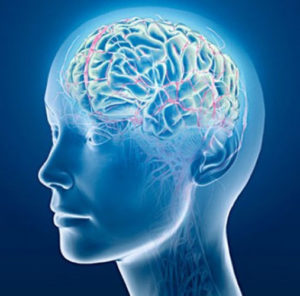What if your drug of choice didn’t get you high anymore? Would you still use it?

This is the type of thinking that is behind naltrexone, an addiction treatment medication. Many people have trouble going through recovery on their own, so naltrexone was created to help prevent those people from taking their drug of choice and fueling their addiction. But is it actually a valid tool for recovery?
How Does Naltrexone Work?
 When you drink alcohol or take an opiate, the reward center in your brain is triggered. The substance targets your opioid receptors, which are responsible for releasing dopamine into your system. This is what creates that euphoric high when using. Naltrexone works as an opioid antagonist. The dose of medication will travel through the bloodstream to the brain and occupy the opioid receptors in place of the drug. So if an addict uses the drug after taking the medication, the drug won’t be able to trigger a dopamine release, therefore not creating a high.
When you drink alcohol or take an opiate, the reward center in your brain is triggered. The substance targets your opioid receptors, which are responsible for releasing dopamine into your system. This is what creates that euphoric high when using. Naltrexone works as an opioid antagonist. The dose of medication will travel through the bloodstream to the brain and occupy the opioid receptors in place of the drug. So if an addict uses the drug after taking the medication, the drug won’t be able to trigger a dopamine release, therefore not creating a high.
Although naltrexone was not chemically created as an alcohol antagonist, it can be used to help treat alcoholism as well. You can still technically get drunk while taking the medication, but the opioid antagonist will block any rush or feelings of comfort that normally come with being drunk. However, unlike opiate abuse, alcohol dependency seems to be best treated with naltrexone by The Sinclair Method. Instead of taking the medication daily, The Sinclair Method recommends only taking it before drinking. The success rate for this method in treating alcohol dependency is about 80%.
Over time the addict’s desire to drink or use will decrease because he’s no longer getting the reward of the high. Ultimately, naltrexone is not a cure for addiction but rather a tool to help an addict stop using.
How to Use Naltrexone
Oral
The general dosage for oral naltrexone is 50 milligrams once daily. However, your doctor may direct you otherwise if you have a unique medical situation. You will have to have completed detox before being prescribed naltrexone. If you are currently using opiates or haven’t been clean and sober for enough time before taking naltrexone, it can actually cause severe and painful withdrawal symptoms. You should be clean and sober for at least seven days before taking it and sometimes even longer for other drugs, such as methadone.
Injection
Naltrexone can also be injected with the Vivitrol injection. Vivitrol is injected into the gluteal muscle (yes, your butt). It is generally about 380 milligrams and is administered once a month. Only a doctor or nurse can give the Vivitrol injection.
Implant
In 2016, the FDA approved the naltrexone implant. The implant is a small pellet that is inserted by a doctor under the skin in the lower abdomen. It then slowly releases low doses of medication over an extended period of time. This is ideal for people who have trouble remembering to take an oral medication everyday or can’t get to the clinic every month for the Vivitrol injection.
Some things to consider before being prescribed naltrexone:
Does Naltrexone Really Work?
The short answer is it does what it is made to do. It blocks opioid receptors and prevents the release of dopamine. But does it actually help people in recovery? That depends on the individual. The oral version can be faulty because of human error. For example, an addict’s life if generally pretty chaotic, even in recovery. They have to remember to go to meetings, check in with family, and get re-assimilated back into the “real world” along with normal routines like holding a job and being social. So remembering to take an oral medication everyday can be a hassle or unrealistic for some people. But if the medication isn’t taken as prescribed (which is daily), it won’t work to its full potential and an addict can relapse. The Vivitrol injection and the implant have higher success rates primarily because it’s harder for human error to occur.
Naltrexone isn’t a cure for recovery. It will disassociate the high from the drug but it won’t stop an addict from using if they really want to. This can be dangerous for people who are absolutely determined to get high again because usual usage of their drug of choice won’t get them high while taking naltrexone. So a desperate attempt to get high can result in overdose.
It also can’t help an addict on its own. The medication is most successful when incorporated in a whole treatment plan that includes monitoring and counseling.
Naltrexone can take the high away from the drug, but recovery is more than that. It’s a complete life change for the better. If you or someone you know is struggling with addiction, New Start’s treatment program can help. Don’t hesitate to call us at 855-737-7363 for a free and confidential assessment.

